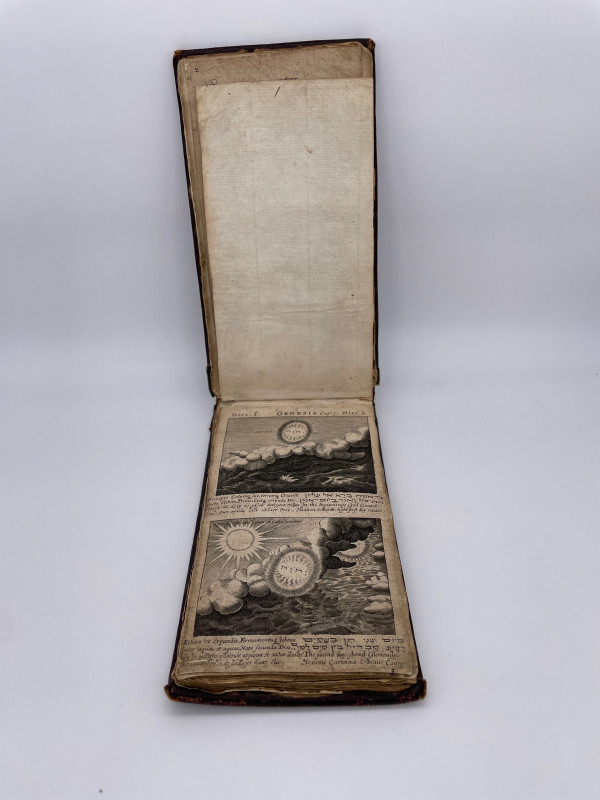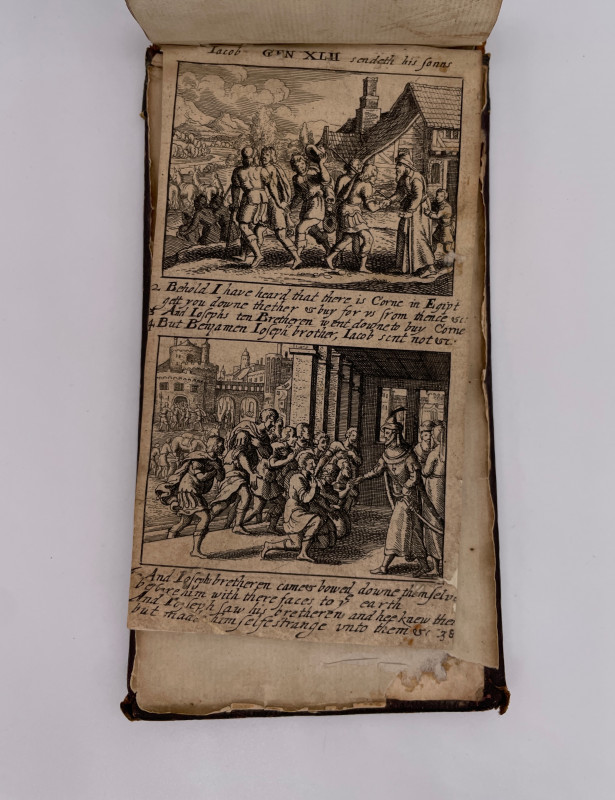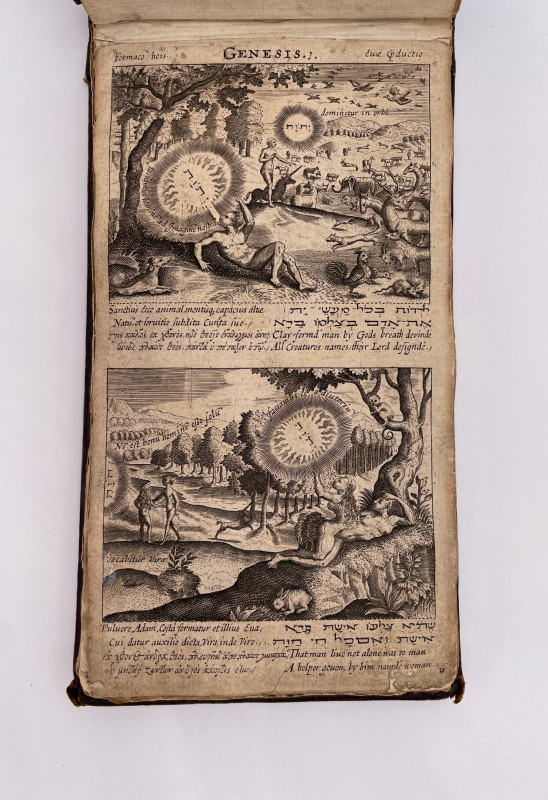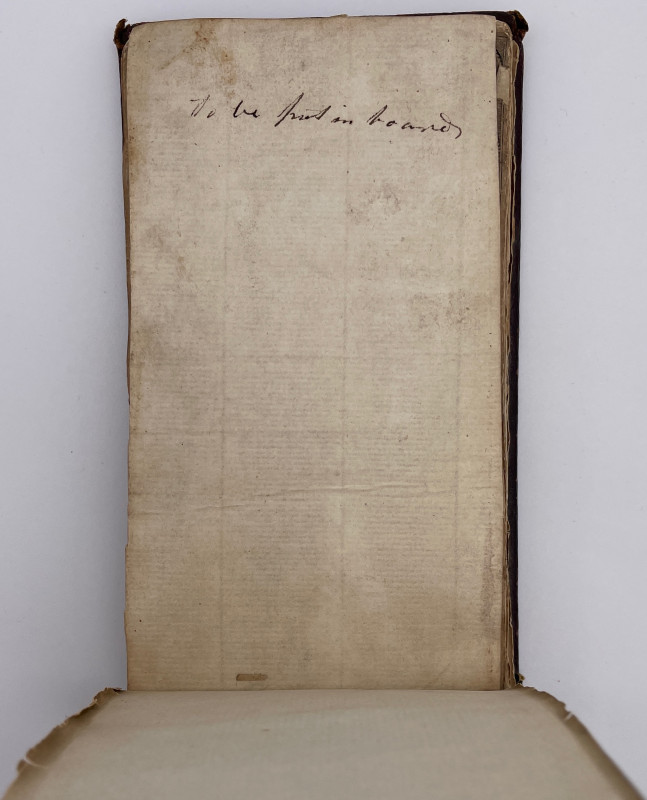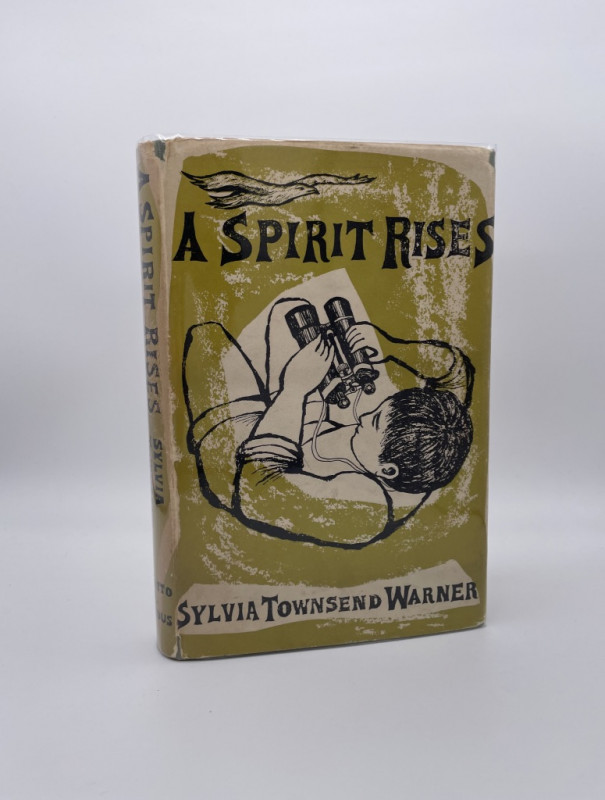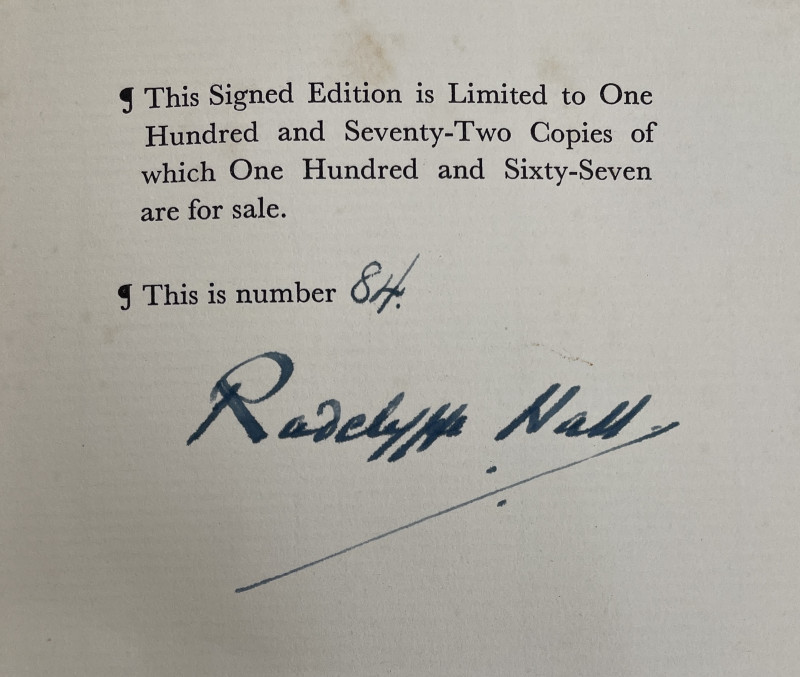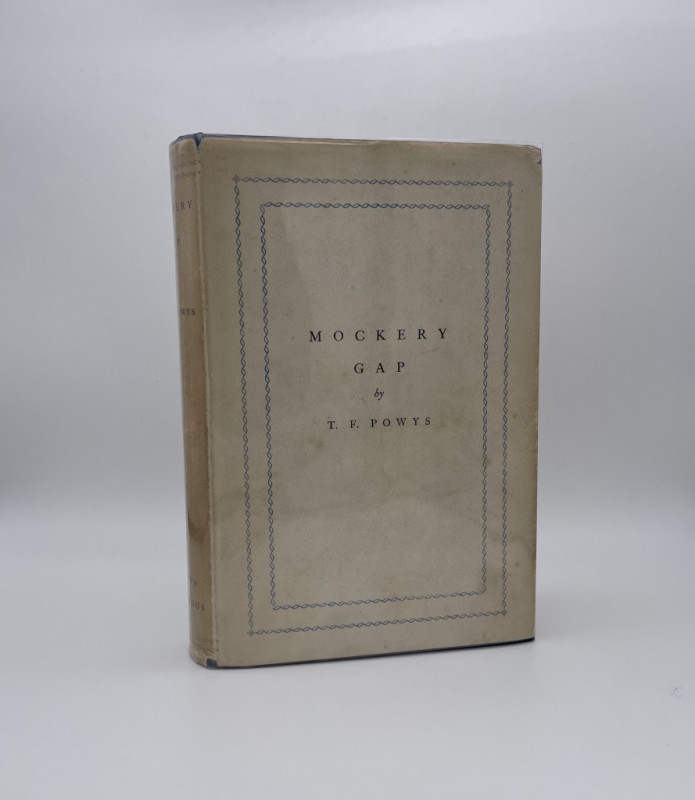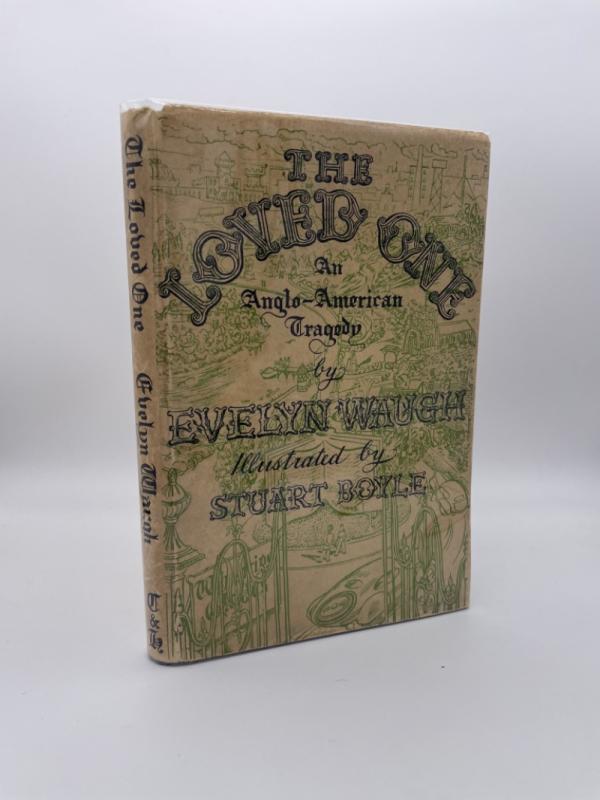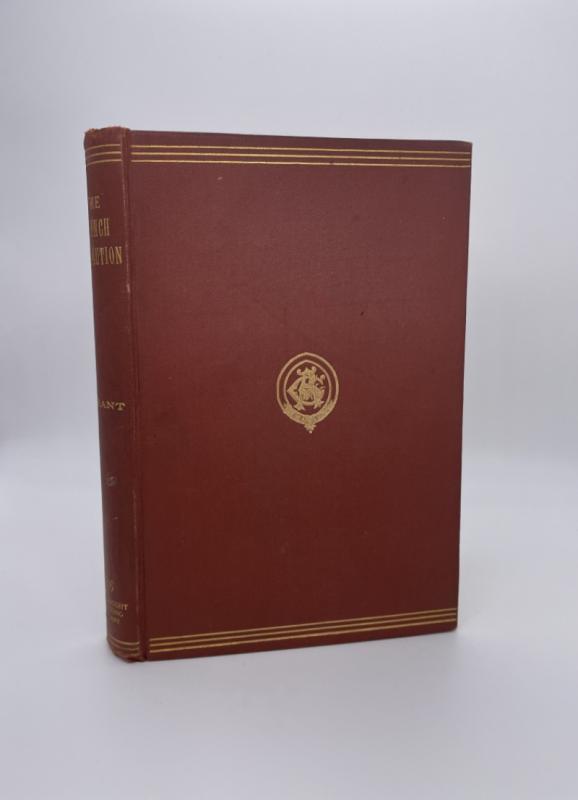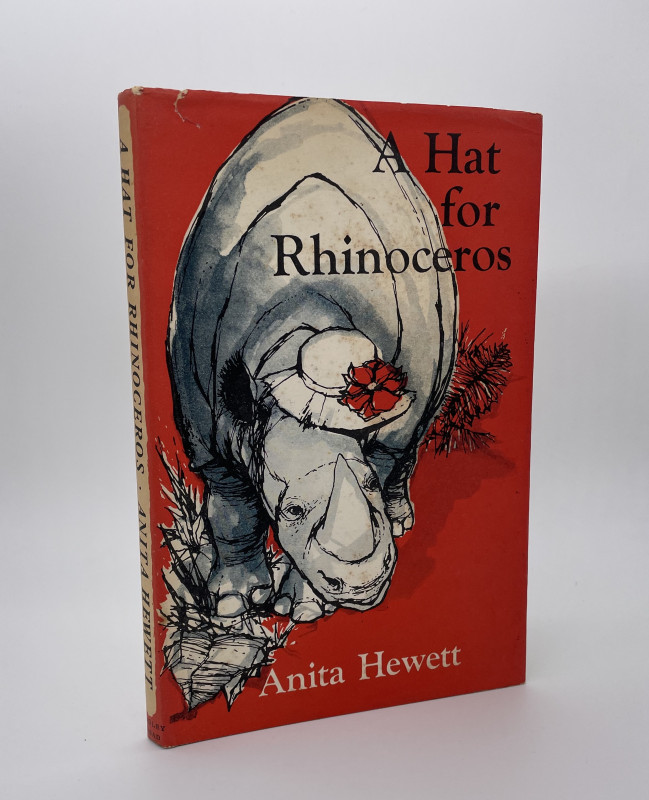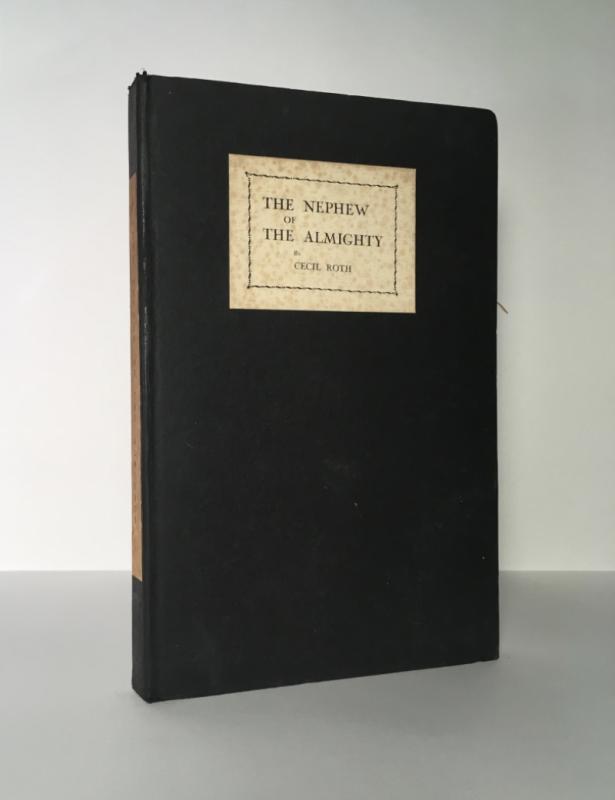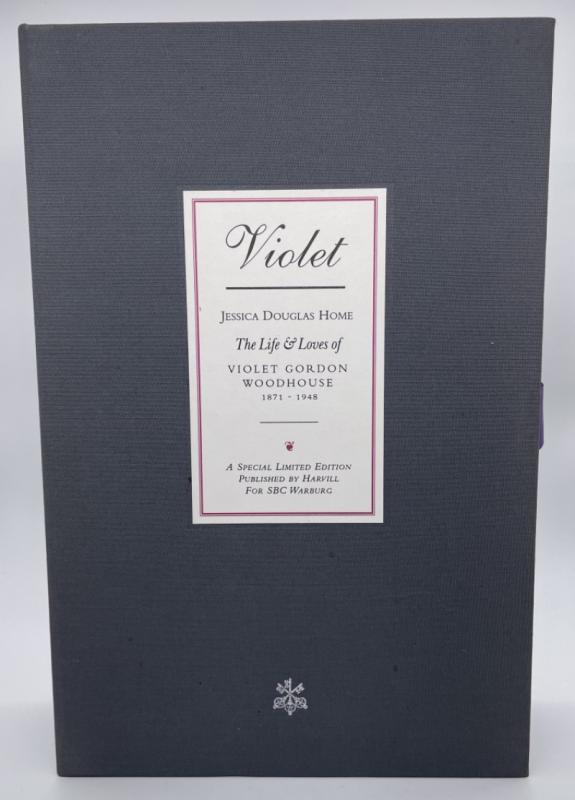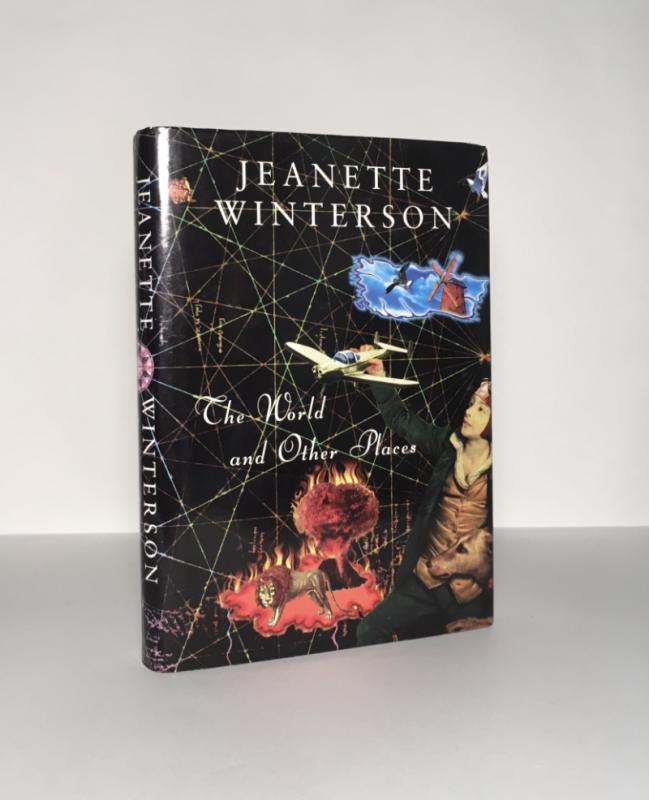An anonymously compiled suite of C.17th biblical engravings by Jacob Van Langeren (a number attributed by BM to Wenceslaus Hollar)
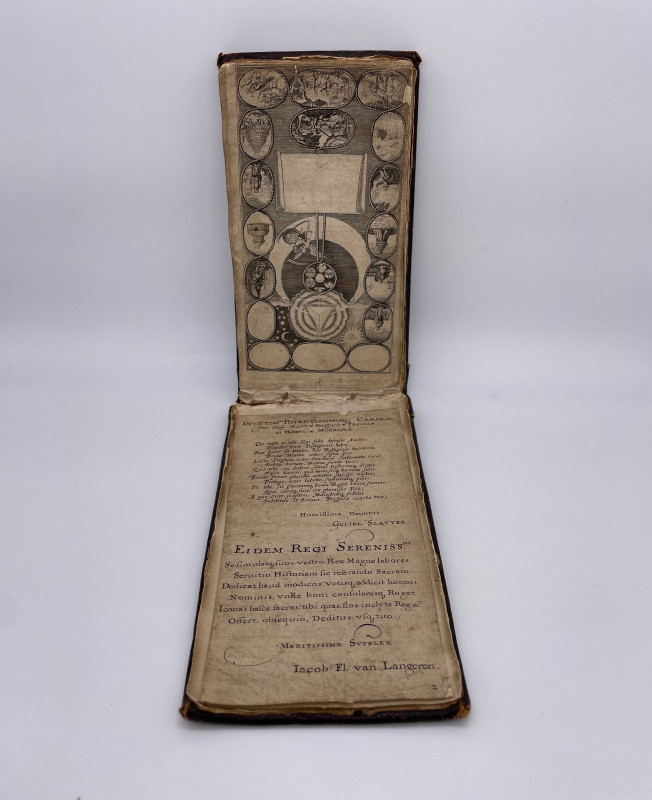
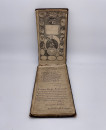

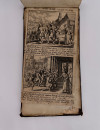


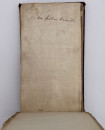
Book Description
Set of C17 Biblical engravings gathered into a single volume in the C19th. c.1635 illustrations to the book of Genesis gathered in a C19th pocketbook. Quarter black morocco, maroon morocco boards (9 x 16cm), ff. [i], 1-34 (numbered by hand on versos), with first, unnumbered leaf’s recto inscribed in sepia ink: “To be first in boards[?]” and its verso pasted with cropped dedication page (to fit pocketbook) comprising two poems in Latin to King Charles (I), signed by Guliel. Slatyer and Iacob Fl. van Langeren; first numbered leaf, recto pasted with unfinished title page (without the title); subsequent rectos (2-34) feature two engravings per page (as printed), cropped and pasted, with ff. 2-11, 13-14 featuring couplets underneath in Latin, Greek, Hebrew and English, and ff. 12, 15-32 featuring descriptions in English. Boards darkened and dented, wear at extremities and edges, short closed tear to head of front joint. Spine cracked at dedication page, leading edges darkened with some wear and small losses to engraved pages, some pages separating, three page stubs at rear: lacking two leaves and rear fep? A striking collection of highly accomplished biblical engravings, a number attributed, by the British Museum, to Wenceslaus Hollar (see below). ESTC S4008/ STC (2nd ed.) 22634.5. The number of copies held in research institutes is difficult to gauge, given the likelihood of the engravings being bound into volumes. Notionally, then, Jisc LHD lists five holdings in Britain (BL, Bodleian, UoGlasgow, Trinity College, Cambridge & UoSheffield), OCLC adds another four copies in the US (Folger, Harvard, Morgan & National Gallery of Art Library).
Dealer Notes
Such compilations of engravings were usually a response to the highly circumscribed printing of Bibles in England, especially with illustrations, and thus continental sets tended to be repurposed. In this example, an English author appears to have paired up with a Dutch engraver (based, it seems, in England).
The seated Britannia watermark dates the pocketbook as early C19th. In terms of locating and dating the engravings, STC locates and dates the illustrations as London, ca. 1635, and ESTC gives [40] engraved leaves: Plate 1: title page (unfinished and without title), plate 2: dedication page, plates 3-16 comprising illustrations with couplets in Latin, Hebrew, Greek, and English and plates 17-40 featuring illustrations with text from the Bible in English. While the manuscript leaf numbers run consecutively ff. 1-34, against ESTC, this compilation of illustrations is out of sequence and lacks six plates. Harvard University Library and the library of Trinity College, Cambridge both hold copies that also feature additional non-biblical plates by other artists, and are both incomplete, while the Folger Shakespeare Library and the Morgan Library’s copies are bound into an extra-illustrated volume of Bible-related works and a 1669 British Bible, printed by John Bill and Christopher Barker, respectively.
Additionally, according to Herbert, Slatyer and Langeren’s dedications to King Charles plus “many plates in Genesis and in the NT” place the engravings in a copy of the 1655 King James Bible published by E. T. for a Society of Stationers Guild (Darlow & Moule 645). The dedications and plates also feature in a copy of Henry Hills and John Field’s 1660 “extra-illustrated” edition of the King James Bible currently on the market (Herbert 669).
The Dutch engraver (fl. 1635), Jacob Van Langeren, also produced contemporaneous etchings of Charles I’s children, James II as Duke of York and Mary, Princess of Orange as Princess Royal (see Royal Collection Trust), as well as English county maps.
The role of William Slatyer (c. 1587–1647) Church of England clergyman and author, is unclear, perhaps he translated the text; his first publication, Pandionium melos, in perpetuam serinissimae simul ac beatissimae Principis Annae reginae memoriam (1619), was a set of elegies and epitaphs on James VI and I’s Queen, Anne of Denmark, and was also issued in Hebrew, Greek, Latin, and English. At the time, Slatyer was Anne of Denmark’s chaplain and the title was addressed to Prince Charles (ODNB). Just over twenty years later, Slatyer found himself in disgrace: his Psalmes, or, Songs of Zion (1630) “intended for Christmas carols” were censured and burned in July 1631. Summoned before the court of high commission three months later, Slatyer confessed that he had “added thereunto a scandalous table to the disgrace of religion, and to the encouragement of the contemners thereof”; likely a list of popular tunes to which the psalms might be sung (ODNB). This disgrace didn’t stay Slatyer’s hand, with A Type of Trew Nobilitye following in the same period as the dedication, c. 1635.
While Slatyer and Van Langeren’s collaboration doesn’t appears to have illustrated any contemporary Bibles, later printers, like Hills and Field, cannily repurposed their dedications, and the engraver’s plates, for use in Restoration Bibles, where “Invictissmo Potentissimoq Carolo” referred instead to Charles II.
In a contrasting attribution, the British Museum holds eight plates from the Genesis sequence, identified as by the prolific Bohemian engraver Wenceslaus Hollar and as illustrations for William Slayter’s History of Gennises (1662), as part of its Sir Hans Sloane bequest. Slatyer’s title, however, hasn’t survived or, indeed, may never have existed: it would have been posthumously published.
ESTC S4008/ STC (2nd ed.) 22634.5
The seated Britannia watermark dates the pocketbook as early C19th. In terms of locating and dating the engravings, STC locates and dates the illustrations as London, ca. 1635, and ESTC gives [40] engraved leaves: Plate 1: title page (unfinished and without title), plate 2: dedication page, plates 3-16 comprising illustrations with couplets in Latin, Hebrew, Greek, and English and plates 17-40 featuring illustrations with text from the Bible in English. While the manuscript leaf numbers run consecutively ff. 1-34, against ESTC, this compilation of illustrations is out of sequence and lacks six plates. Harvard University Library and the library of Trinity College, Cambridge both hold copies that also feature additional non-biblical plates by other artists, and are both incomplete, while the Folger Shakespeare Library and the Morgan Library’s copies are bound into an extra-illustrated volume of Bible-related works and a 1669 British Bible, printed by John Bill and Christopher Barker, respectively.
Additionally, according to Herbert, Slatyer and Langeren’s dedications to King Charles plus “many plates in Genesis and in the NT” place the engravings in a copy of the 1655 King James Bible published by E. T. for a Society of Stationers Guild (Darlow & Moule 645). The dedications and plates also feature in a copy of Henry Hills and John Field’s 1660 “extra-illustrated” edition of the King James Bible currently on the market (Herbert 669).
The Dutch engraver (fl. 1635), Jacob Van Langeren, also produced contemporaneous etchings of Charles I’s children, James II as Duke of York and Mary, Princess of Orange as Princess Royal (see Royal Collection Trust), as well as English county maps.
The role of William Slatyer (c. 1587–1647) Church of England clergyman and author, is unclear, perhaps he translated the text; his first publication, Pandionium melos, in perpetuam serinissimae simul ac beatissimae Principis Annae reginae memoriam (1619), was a set of elegies and epitaphs on James VI and I’s Queen, Anne of Denmark, and was also issued in Hebrew, Greek, Latin, and English. At the time, Slatyer was Anne of Denmark’s chaplain and the title was addressed to Prince Charles (ODNB). Just over twenty years later, Slatyer found himself in disgrace: his Psalmes, or, Songs of Zion (1630) “intended for Christmas carols” were censured and burned in July 1631. Summoned before the court of high commission three months later, Slatyer confessed that he had “added thereunto a scandalous table to the disgrace of religion, and to the encouragement of the contemners thereof”; likely a list of popular tunes to which the psalms might be sung (ODNB). This disgrace didn’t stay Slatyer’s hand, with A Type of Trew Nobilitye following in the same period as the dedication, c. 1635.
While Slatyer and Van Langeren’s collaboration doesn’t appears to have illustrated any contemporary Bibles, later printers, like Hills and Field, cannily repurposed their dedications, and the engraver’s plates, for use in Restoration Bibles, where “Invictissmo Potentissimoq Carolo” referred instead to Charles II.
In a contrasting attribution, the British Museum holds eight plates from the Genesis sequence, identified as by the prolific Bohemian engraver Wenceslaus Hollar and as illustrations for William Slayter’s History of Gennises (1662), as part of its Sir Hans Sloane bequest. Slatyer’s title, however, hasn’t survived or, indeed, may never have existed: it would have been posthumously published.
ESTC S4008/ STC (2nd ed.) 22634.5
Author
[Anon]; VAN LANGEREN, Iacob Fl. [Jacob Van Langeren] (engraver); SLATYER, Guliel.[mus] [William Slatyer] (author)
Date
[c. 1635].
Publisher
[London]: s.n.
Friends of the PBFA
For £10 get free entry to our fairs, updates from the PBFA and more.
Please email info@pbfa.org for more information
